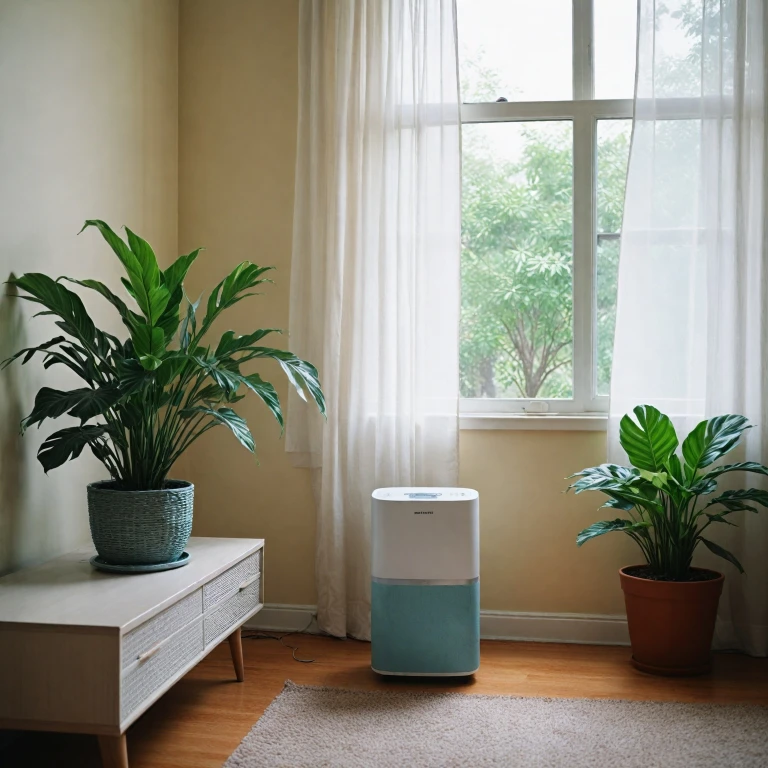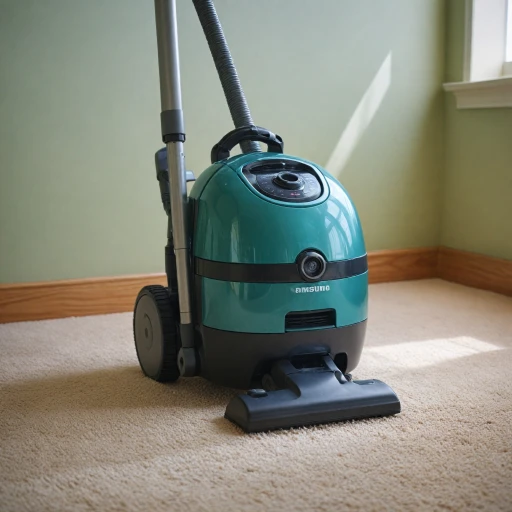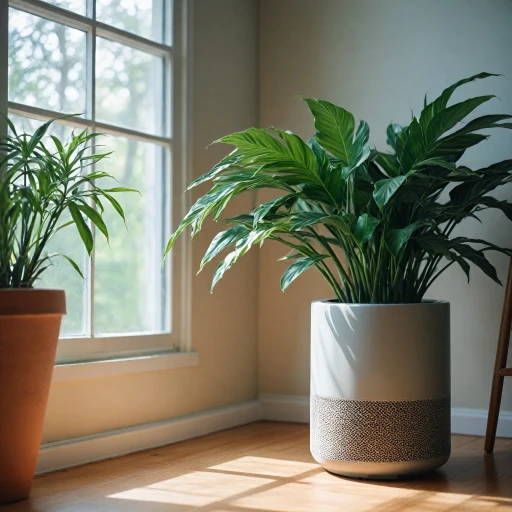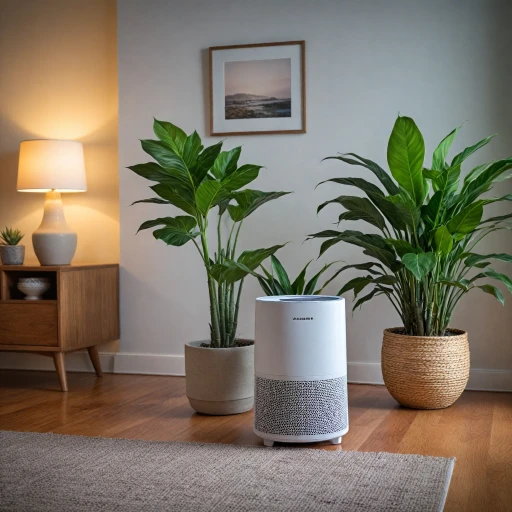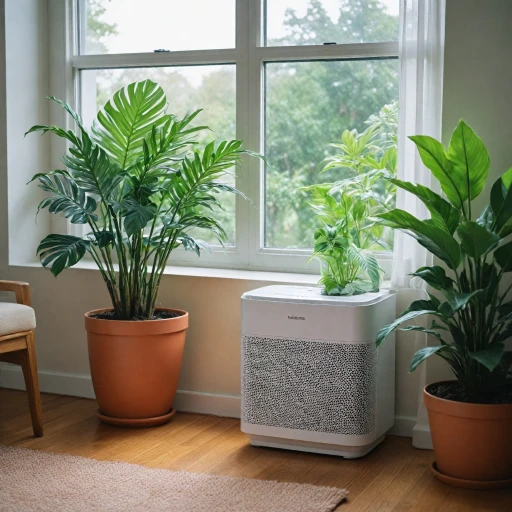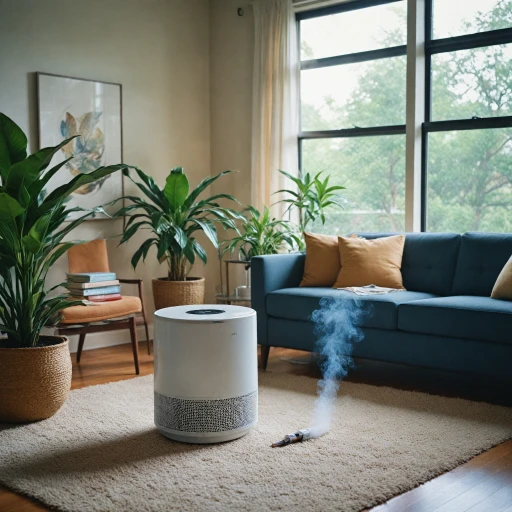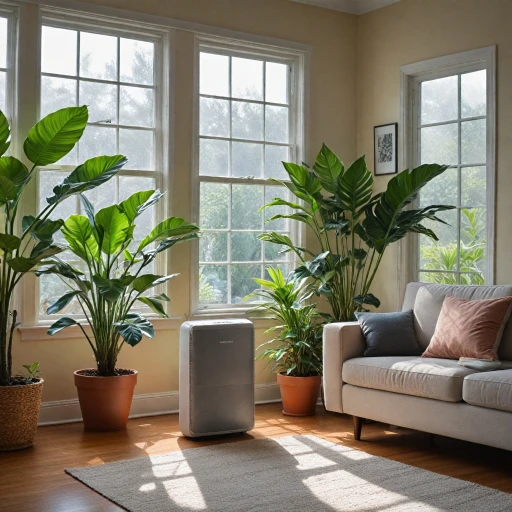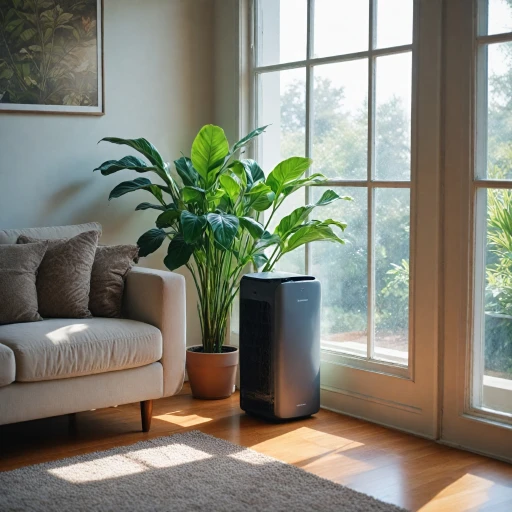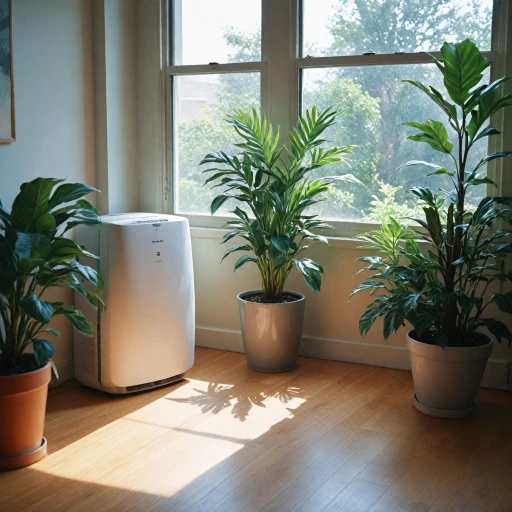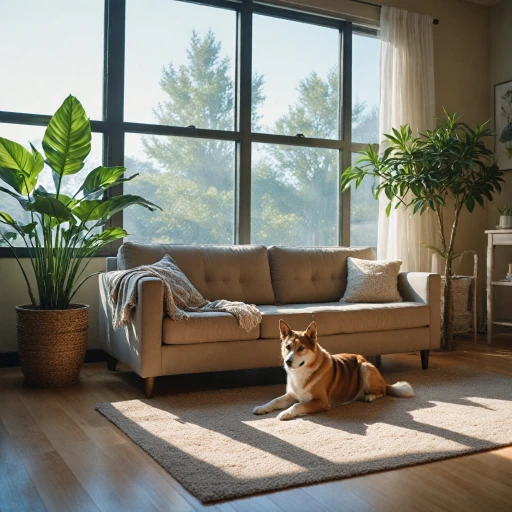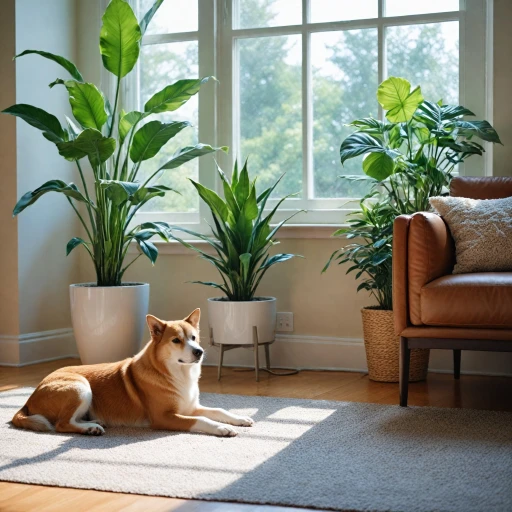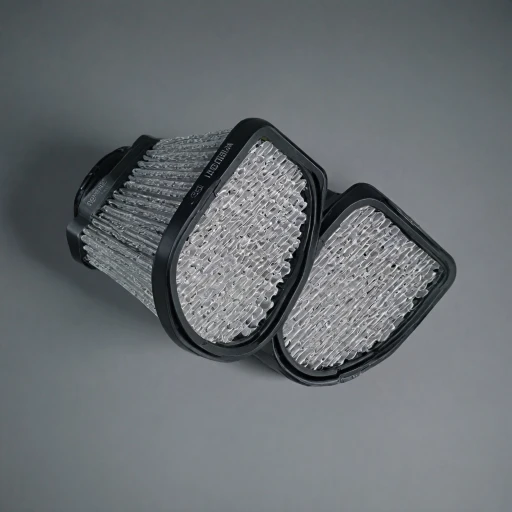
Understanding Smoke and Its Impact on Indoor Air Quality
The Dynamics of Smoke and Indoor Environment
Smoke is a complex mixture of gases and fine particles that can deteriorate indoor air quality. The sources of smoke can vary widely, from wildfire smoke to cigarette smoke, each with distinct characteristics. Understanding these variations is essential for selecting the best air cleaning solution.
Evaluating Air Quality Deterioration
When smoke particles invade indoor spaces, they contribute to poor air quality, potentially affecting our health. A reliable air purifier can mitigate this by filtering out harmful particles and gases. High-efficiency particulate air (HEPA) filters are renowned for their ability to capture small particles, while activated carbon filters are effective in adsorbing gases.
Importance of Recognizing Smoke-Related Health Risks
Exposure to smoke can lead to respiratory issues and exacerbate conditions like asthma and allergies. By improving indoor air, purifiers can significantly reduce these health risks. Features such as a true HEPA filter and activated carbon filter are vital in this regard. Some purifiers are specifically designed to cater to large rooms while maintaining a low noise level, ensuring comfort without compromise.
For a more comprehensive understanding of smoke's impact and to explore additional insights, consider delving into specialized content focused on air purifiers for volatile organic compounds (VOCs).
Key Features to Look for in Air Purifiers for Smoke
Prioritizing Essential Features for Effective Smoke Removal
When it comes to selecting the perfect air purifier for dealing with smoke, specifically from sources such as wildfire smoke or cigarette smoke, identifying the key features is essential. To ensure optimal air quality, it's crucial to discern which attributes make an air purifier worth the investment.- True HEPA Filter: A True HEPA filter captures 99.97% of dust, pollen, and smoke particles down to 0.3 microns in size. It's fundamental when targeting fine particulate matter found in smoke.
- Activated Carbon Filter: This filter is adept at absorbing odors and volatile organic compounds (VOCs) present in smoke. Ensuring the purifier has a high-quality activated carbon filter enhances smoke removal.
- Auto Mode: Purifiers equipped with auto mode automatically adjust fan speeds based on the detected air quality, providing efficient and energy-saving operation, particularly important during unpredictable smoke events like wildfires.
- Performance in Large Rooms: Consider the product's coverage area, particularly if you plan to use it in a large room. Models like the Airmega Mighty are designed for larger spaces, maintaining high air quality even amid smoke infiltration.
- Low Noise Level: Effective air purifiers for smoke offer quieter operations, allowing uninterrupted activities while maintaining clean air. Consider models that have tested well in noise level performance.
- Energy Efficiency: Look for air purifiers with an energy star rating, ensuring cost-effective long-term use. This feature not only impacts your electricity bills but also contributes to a sustainable lifestyle.
Comparing Popular Air Purifier Models for Smoke
Comparing Air Purifiers for Tackling Smoke
When choosing an air purifier to address smoke, understanding the differences between models is crucial. Here, we compare popular products to help you make an informed choice.
One standout option is the Blue Pure 211+, which offers a three-stage filtration system integrating a pre-filter and a true HEPA filter. It's highly efficient in removing smoke particles and enhances air quality significantly. Additionally, the activated carbon filter lowers odors, making it a solid choice for eliminating cigarette smoke and wildfire smoke alike.
The Airmega Mighty is another top contender. Its auto mode adjusts the fan speed according to air quality changes, optimizing operation. It's equipped with a reliable true HEPA air filter, tested to handle smoke and dust pollen effectively. Its noise level is relatively low, fitting the criteria for a large room air cleaner.
For budget-conscious buyers, the Honeywell HPA300 offers good performance at a reasonable price. It meets the basic standards with HEPA filters and a significant fan power, albeit at a higher noise level than some might prefer. Users have praised its ability for filtering smoke efficiently in spacious rooms.
Finally, the Dyson TP04 features a unique design and an advanced air quality monitor. Its HEPA air filter can capture ultrafine particles, while the carbon filter aids in removing gases and odors. Although it falls on the pricier side, its features and technology back up the cost.
Each of these purifiers has been thoroughly tested in varying environments, proving capable in maintaining a smoke-free atmosphere and promoting health benefits.
Placement and Maintenance Tips for Optimal Performance
Strategic Placement for Maximum Effectiveness
When it comes to tackling smoke in indoor environments, the placement of your air purifier can significantly impact its effectiveness. It's essential to consider where smoke concentrations are highest and where the air flow naturally circulates within the room.
- Central Location: Position the purifier in a central spot within the room to maximize air circulation and facilitate comprehensive cleaning. The closer the purifier is to the source of smoke, such as a kitchen or near a window where cigarette smoke might enter, the more efficiently it can filter the air.
- Avoid Corners: Placing the purifier against walls or in corners may hinder its ability to capture particles effectively. Allowing free space around the unit ensures unrestricted airflow and optimal performance.
- Large Room Considerations: For spacious areas, considering units like the Airmega Mighty or the Blue Pure series can be advantageous, as these models are designed for larger spaces and can effectively cover broader scopes of air quality concerns.
Maintenance: Key to Longevity and Efficiency
Routine maintenance not only extends the life of your air purifier but also ensures it continues to perform at peak efficiency. Consider these tips to keep your air purifier in top shape:
- Regular Filter Changes: Depending on usage, replace HEPA and carbon filters as per the manufacturer's guidelines. This is crucial to maintaining the product's ability to filter out smoke particles effectively.
- Dust and Clean: Wipe down the exterior of the purifier and the air vents regularly to prevent dust and pollen buildup, which might impair the unit's performance.
- Auto Mode Advantages: Many modern purifiers come with auto mode, adjusting the fan speed based on the detected air quality. Utilizing this feature can enhance both efficiency and energy conservation.
Consistent upkeep paired with strategic placement can notably enhance the overall air quality in your room, ensuring that the purifier remains a reliable guardian against smoke infiltration.
Cost Considerations and Budget-Friendly Options
Smart Investments: Budgeting for the Right Air Purifier
When you’re navigating the market for the best air purifier, especially one that efficiently tackles smoke, concentrating on both quality and cost is essential. Here’s how you can align your budget with your health needs while ensuring optimal performance of your chosen device.- Understanding Price Versus Features: Top-quality air purifiers often come with features like HEPA filters, activated carbon filters, and auto mode for adjusting settings based on air quality. While models like the Blue Pure or Airmega Mighty may have higher price points, their advanced technology ensures effective purification for environments affected by cigarette smoke or wildfire smoke.
- Long-term Costs of Filter Replacements: Investing in a purifier also means accounting for ongoing filter changes, like HEPA or carbon filter replacements, to maintain air quality. Analyze manufacturer standards and replacement schedules when considering purifiers to predict future expenses accurately.
- No Compromise on Health: Cost-effective options exist on platforms like Amazon, yet ensure they don’t skimp on essential features. Devices with high efficiency for dust pollen and reliable tested purifiers maintain a healthy indoor environment without excessive costs.
- Room-Specific Sizing: Consider where you’ll place the purifier. Larger rooms may require more powerful devices, which can increase the cost. On the other hand, a standard air cleaner might suffice in a smaller room, offering savings on both initial price and operation.
- Noise Level Considerations: For a peaceful home environment, evaluate the noise levels of potential purifiers. Products with a low operational noise provide comfort alongside air quality improvements. Balancing cost against quieter models will ensure satisfaction.
- Exploring Budget-Friendly Options: If you’re budget-conscious, there are numerous products with essential features, like HEPA filter air purifiers, available without extravagant expenses. These can be efficient in managing smoke and dust pollen while respecting financial limits.
User Reviews and Real-Life Experiences
User Feedback on Popular Air Purifiers
When looking to select the best air purifier for combating smoke, user reviews and experiences can provide valuable insights into the real-world performance of different products. Reviews often highlight areas that might not be evident in the product's listed features. Here are some key takeaways from user feedback on popular purifiers:
- Overall Performance and Features: Users frequently mention the effectiveness of True HEPA and carbon filters in removing smoke particles. The addition of activated carbon helps in absorbing odors, which is crucial for treating smoke from cigarettes and wildfire events.
- Noise Levels: Especially for purifiers like the Airmega Mighty, the noise level is often a point of discussion. Many appreciate a quiet operation, particularly when the purifier runs on auto mode in a bedroom or living area.
- Room Coverage: Air purifiers such as the Blue Pure are praised for effectively covering large rooms, but it's essential to match your room size with the purifier's capacity for optimal air quality improvement.
- Maintenance and Durability: Regular filter changes are a common necessity, with the cost and frequency being potential drawbacks. Users generally prefer purifiers with long-lasting filters that maintain high air quality standards over time.
- Cost vs. Value: Budget-friendly options garner positive attention if they deliver good results without compromising on essential features. Comparisons often highlight that a higher price does not always equate to better performance.
- Supply Chain and Availability: In recent times, supply chain issues can affect product availability. It's recommended to check platforms like Amazon for the latest stock updates.
These insights can guide you in choosing a product that aligns well with your requirements and expectations for dealing with smoke-related air quality issues. For more details on specific features to consider, you might find our comprehensive guide on choosing the right air filter useful.
